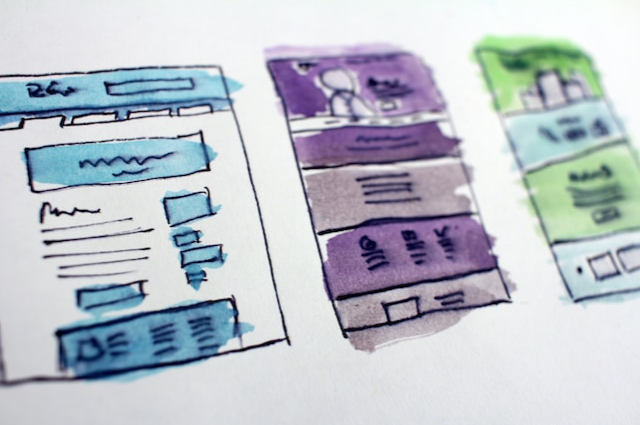In the vast landscape of the internet, where attention spans are fleeting and competition is fierce, the success of a website hinges on more than just aesthetics. Crafting a web presence that captivates, engages, and converts requires a meticulous journey from concept to click. In this exploration, we’ll unravel the intricate layers of web design and development, shedding light on the essential elements that contribute to a successful online presence.
Table of Contents
Understanding the Basics: Conceptualizing the Vision
Before diving into the technical intricacies, every successful web project begins with a clear vision. Understanding the purpose, audience, and goals is fundamental. The concept stage is akin to laying the foundation for a building; it’s the bedrock upon which the entire structure will stand.
1. Define the Purpose and Goals:
Start by asking fundamental questions. Why does this website exist? What goals do we aim to achieve? Whether it’s to sell products, share information, or build a community, a clearly defined purpose is the compass that guides every subsequent decision.
2. Know Your Audience:
Understanding the target audience is pivotal. What are their preferences, needs, and pain points? This knowledge shapes not only the design but also the functionality and content strategy.
3. Research and Benchmark:
Explore competitors and industry leaders. What works well? What doesn’t? Researching and benchmarking provide insights that can be invaluable in shaping a unique and competitive web presence.
Designing the User Experience: Aesthetics with a Purpose
Once the concept is crystallized, it’s time to breathe life into the vision through design. Beyond creating a visually appealing interface, successful web design prioritizes user experience (UX) and user interface (UI) design.
1. Prioritize User-Centric Design:
User experience should be at the forefront of design decisions. Intuitive navigation, clear calls-to-action, and a visually pleasing layout contribute to a positive user experience.
2. Responsive Design for All Devices:
In a world where users access websites on a variety of devices, responsive design is not a luxury but a necessity. Ensuring a seamless experience across desktops, tablets, and smartphones is crucial for user satisfaction.
3. Consistency and Branding:
Consistency in design elements, color schemes, and branding reinforces a strong visual identity. This not only enhances brand recall but also instills a sense of trust in users.
The Technical Ballet: Developing a Solid Foundation
With the design in place, it’s time to shift focus to the development phase. This is where the blueprint is translated into a functional website through coding and programming.
1. Choose the Right Technology:
The choice of technology—whether it’s a content management system (CMS) like WordPress, a custom-built solution, or an e-commerce platform—should align with the project’s goals and scalability requirements.
2. Clean and Efficient Code:
Efficient and clean code not only ensures smooth functionality but also contributes to search engine optimization (SEO). A well-structured codebase makes future updates and maintenance more manageable.
3. Test Rigorously:
Thorough testing is non-negotiable. From functionality checks to cross-browser compatibility and performance testing, the development phase should conclude with a comprehensive quality assurance process.
Content is King: Crafting Compelling Narratives
While design and development provide the framework, content is the soul of a website. Compelling, relevant, and well-structured content is the bridge between the brand and its audience.
1. Develop a Content Strategy:
Map out a content strategy that aligns with the brand voice, values, and the needs of the target audience. Content should be a blend of informative, entertaining, and actionable elements.
2. Optimize for SEO:
Incorporate search engine optimization (SEO) best practices into the content creation process. This includes keyword research, meta tags, and creating content that aligns with user search intent.
3. Embrace Multimedia:
Incorporate multimedia elements such as images, videos, and infographics. Visual content not only enhances user engagement but also contributes to a dynamic and visually appealing website.
Launch Day: Beyond the Click
The culmination of meticulous planning and execution is the launch day. However, success in the online realm is an ongoing journey. Post-launch activities are as crucial as the development phase.
1. Monitor Performance:
Utilize tools like Google Analytics to monitor website performance. Analyze user behavior, track conversions, and identify areas for improvement.
2. Iterate and Improve:
A successful website is not static. Regularly update and iterate based on user feedback, technological advancements, and changes in the competitive landscape.
3. Security and Maintenance:
Ensure the website’s security through regular updates, patches, and security audits. A secure website is not only vital for user trust but also protects against potential threats.
Conclusion: Beyond Clicks to Conversions
In the dynamic world of web design and development, success is not defined by clicks alone. It’s about creating a seamless journey from the initial concept to the final click that results in conversions. By understanding the nuances of design, development, and content, a website can transcend the ordinary and become a powerful tool for brand expression and user engagement. So, embark on this journey with a clear vision, a user-centric approach, and the commitment to evolve with the ever-changing digital landscape. The blueprint is laid; it’s time to click and conquer.





